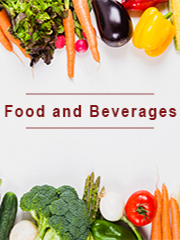TOP CATEGORY: Chemicals & Materials | Life Sciences | Banking & Finance | ICT Media

Download Report PDF Instantly
Report overview
The global Dinner Ready-to-Eat (RTE) Food market was valued at US$ 118300 million in 2023 and is projected to reach US$ 146110 million by 2030, at a CAGR of 3.1% during the forecast period. The influence of COVID-19 and the Russia-Ukraine War were considered while estimating market sizes.
This report studies the Dinner RTE Foods market, RTE Foods refers to Ready-to-eat Foods.
Ready to eat meal products are often referred to as convenience food, for the convenience they provide to the hectic life of people. They are readymade food or almost readymade food that just requires boiling.
This report aims to provide a comprehensive presentation of the global market for Dinner Ready-to-Eat (RTE) Food, with both quantitative and qualitative analysis, to help readers develop business/growth strategies, assess the market competitive situation, analyze their position in the current marketplace, and make informed business decisions regarding Dinner Ready-to-Eat (RTE) Food. This report contains market size and forecasts of Dinner Ready-to-Eat (RTE) Food in global, including the following market information:
North America occupied the largest market share with about 40%. It was followed by Europe and Asia-Pacific with 30% and 20%. Nestle, Unilever, Kraft Heinz, McCain Foods Limited and General Mills are the leaders of the global Dinner RTE Foods market, and these top 5 companies hold nearly 30% market share.
Depending on the process of production and packaging, they are segmented into canned food, frozen food and chilled food. And because the major drivers of the market arent specific to any region but are globally influencing the market, hence ready to eat meal products market is fast growing uphill and has become the largest market in food industry globally.
Age Groups:
Gender:
Income Levels:
Urban vs. Rural:
Meal Frequency:
Health and Wellness:
Online vs. Offline Purchases:
Packaging and Sustainability:
The Dinner Ready-to-Eat food market continues to evolve, driven by diverse consumer demographics and changing lifestyle patterns. The demand for convenience, coupled with a growing interest in health and sustainability, shapes the purchasing behaviors and preferences of modern consumers.
We surveyed the Dinner Ready-to-Eat (RTE) Food manufacturers, suppliers, distributors and industry experts on this industry, involving the sales, revenue, demand, price change, product type, recent development and plan, industry trends, drivers, challenges, obstacles, and potential risks.
Total Market by Segment:
Global Dinner Ready-to-Eat (RTE) Food Market, by Type, 2019-2024, 2025-2030 ($ Millions) & (Kiloton)
Global Dinner Ready-to-Eat (RTE) Food Market Segment Percentages, by Type, 2023 (%)
Outline of Major Chapters:
Chapter 1: Introduces the definition of Dinner Ready-to-Eat (RTE) Food, market overview.
Chapter 2: Global Dinner Ready-to-Eat (RTE) Food market size in revenue and volume.
Chapter 3: Detailed analysis of Dinner Ready-to-Eat (RTE) Food manufacturers competitive landscape, price, sales and revenue market share, latest development plan, merger, and acquisition information, etc.
Chapter 4: Provides the analysis of various market segments by type, covering the market size and development potential of each market segment, to help readers find the blue ocean market in different market segments.
Chapter 5: Provides the analysis of various market segments by application, covering the market size and development potential of each market segment, to help readers find the blue ocean market in different downstream markets.
Chapter 6: Sales of Dinner Ready-to-Eat (RTE) Food in regional level and country level. It provides a quantitative analysis of the market size and development potential of each region and its main countries and introduces the market development, future development prospects, market space of each country in the world.
Chapter 7: Provides profiles of key players, introducing the basic situation of the main companies in the market in detail, including product sales, revenue, price, gross margin, product introduction, recent development, etc.
Chapter 8: Global Dinner Ready-to-Eat (RTE) Food capacity by region & country.
Chapter 9: Introduces the market dynamics, latest developments of the market, the driving factors and restrictive factors of the market, the challenges and risks faced by manufacturers in the industry, and the analysis of relevant policies in the industry.
Chapter 10: Analysis of industrial chain, including the upstream and downstream of the industry.
Chapter 11: The main points and conclusions of the report.